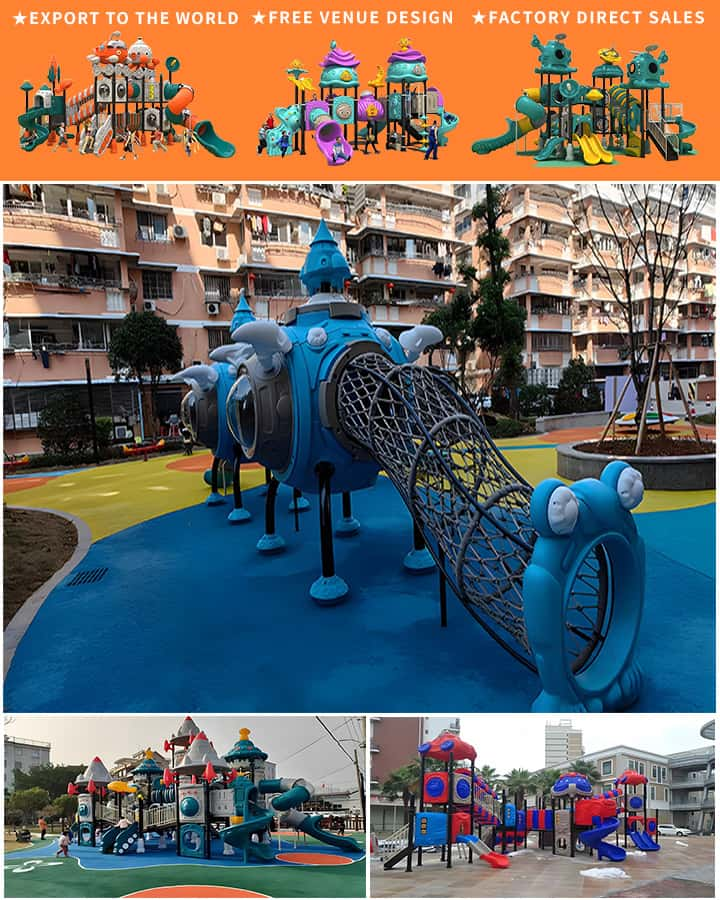Outdoor playgrounds have long been a staple of childhood, providing a space for fun, physical activity, and social interaction. However, the installation of an outdoor playground is a significant project that requires careful planning, consideration, and execution to ensure it is safe and enjoyable for children. This guide will walk you through the essential steps and best practices for installing an outdoor playground, from initial planning to final touches.
1. Planning and Design
The first step in any successful playground installation is meticulous planning and design. Begin by assessing the available space and considering the needs and preferences of the children who will use the playground. Factors such as age range, number of users, and desired activities (e.g., climbing, sliding, swinging) should all influence your design choices.
Engage with landscape architects or playground designers early in the process. They can help create a blueprint that maximizes safety while incorporating various elements of play. Additionally, consult local regulations and guidelines to ensure compliance with safety standards.
2. Site Selection and Preparation
Choosing the right location for your playground is crucial. Look for a flat, level area free from obstacles like trees, rocks, and utility lines. Adequate drainage is also essential to prevent waterlogging and ensure year-round usability.
Once the site is selected, prepare the ground by removing grass, roots, and debris. You may need to excavate and install a base material such as crushed stone or sand to create a stable foundation. Proper site preparation helps prevent future settling and ensures the longevity of the playground equipment.

3. Selecting Playground Equipment
When selecting playground equipment, prioritize safety without compromising on fun. Choose durable, high-quality materials that withstand various weather conditions. Age-appropriate equipment is vital; for example, toddler areas should have softer surfaces and smaller structures compared to those for older children.
Ensure that the equipment meets national safety standards, such as those set by the American Society for Testing and Materials (ASTM) or the Consumer Product Safety Commission (CPSC). Features like rounded edges, non-toxic materials, and impact-absorbing surfaces are critical to reducing injury risks.
4. Installation Process
Hiring professionals for playground installation is highly recommended, as they possess the skills and expertise needed to assemble and secure the equipment properly. During installation, follow these key steps:
- Assemble Equipment: Carefully read and follow the manufacturer’s instructions during assembly. Ensure all parts are securely fastened and aligned.
- Surface Installation: Install appropriate surfacing materials, such as rubber mats, wood chips, or poured-in-place rubber, which provide cushioning against falls. The depth and type of surfacing depend on the height of the equipment and local regulations.
- Final Inspections: Conduct thorough inspections post-installation to check for stability, proper fastening of all components, and adherence to safety guidelines. Make any necessary adjustments before allowing children to use the playground.
5. Maintenance and Upkeep
Maintenance is key to prolonging the lifespan of your playground and ensuring ongoing safety. Regularly inspect the equipment for signs of wear and tear, such as rust, loose bolts, or damaged surfaces. Address minor issues promptly to prevent them from escalating into major problems.
Keep the playground clean by regularly sweeping away debris and checking for hazardous materials. Periodically refresh surface materials to maintain their shock-absorbing properties.
6. Engaging the Community
An outdoor playground should be a community asset that encourages inclusive play. Consider incorporating features that cater to children of all abilities, such as wheelchair-accessible structures and sensory-rich elements. Host community events and workshops to foster a sense of ownership and responsibility among residents.
In conclusion, installing an outdoor playground is a rewarding endeavor that provides endless opportunities for fun and developmental growth. By following these guidelines—planning carefully, selecting appropriate equipment, ensuring proper installation, maintaining the area diligently, and involving the community—you can create a safe, welcoming space where children can thrive.




